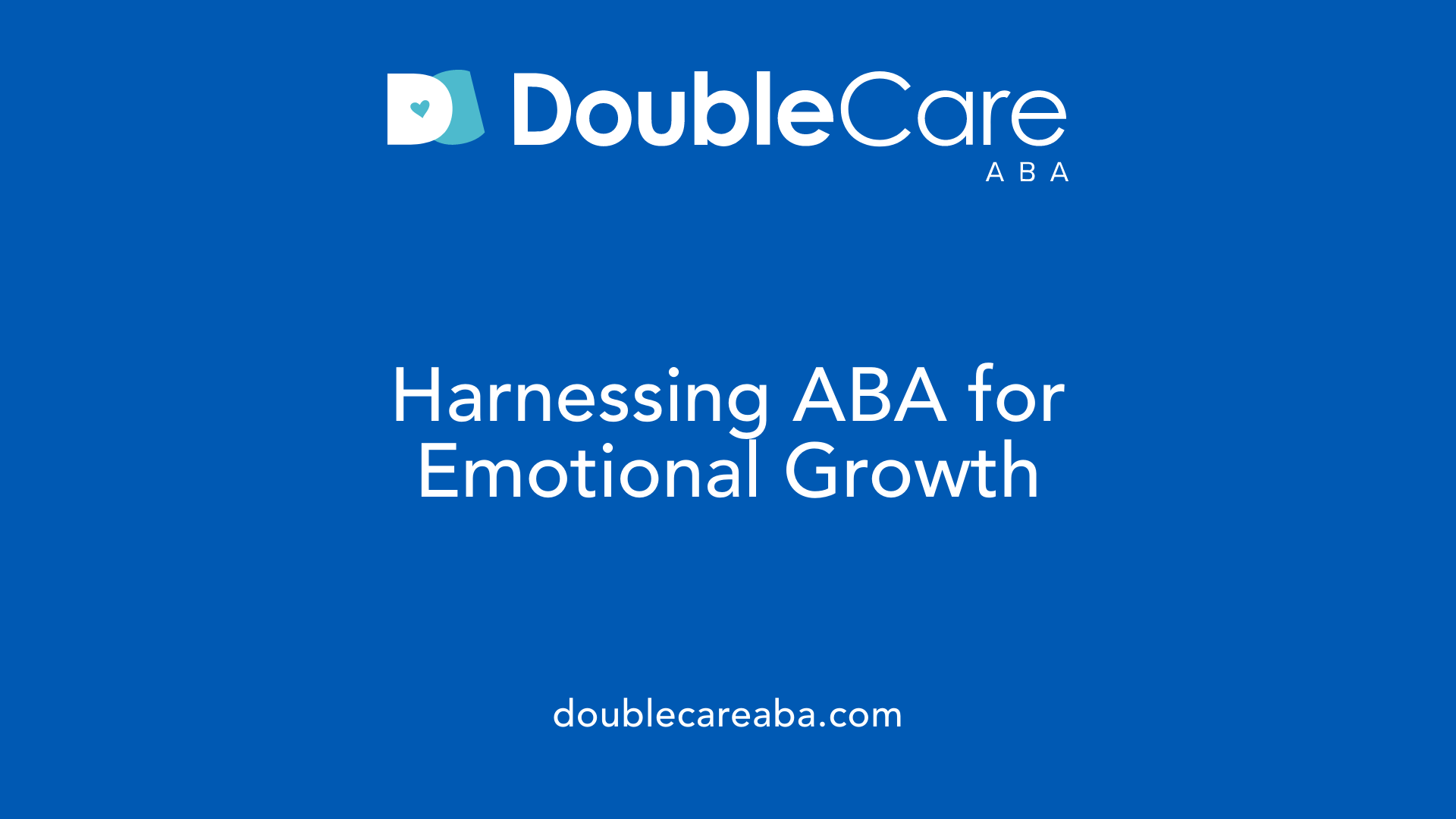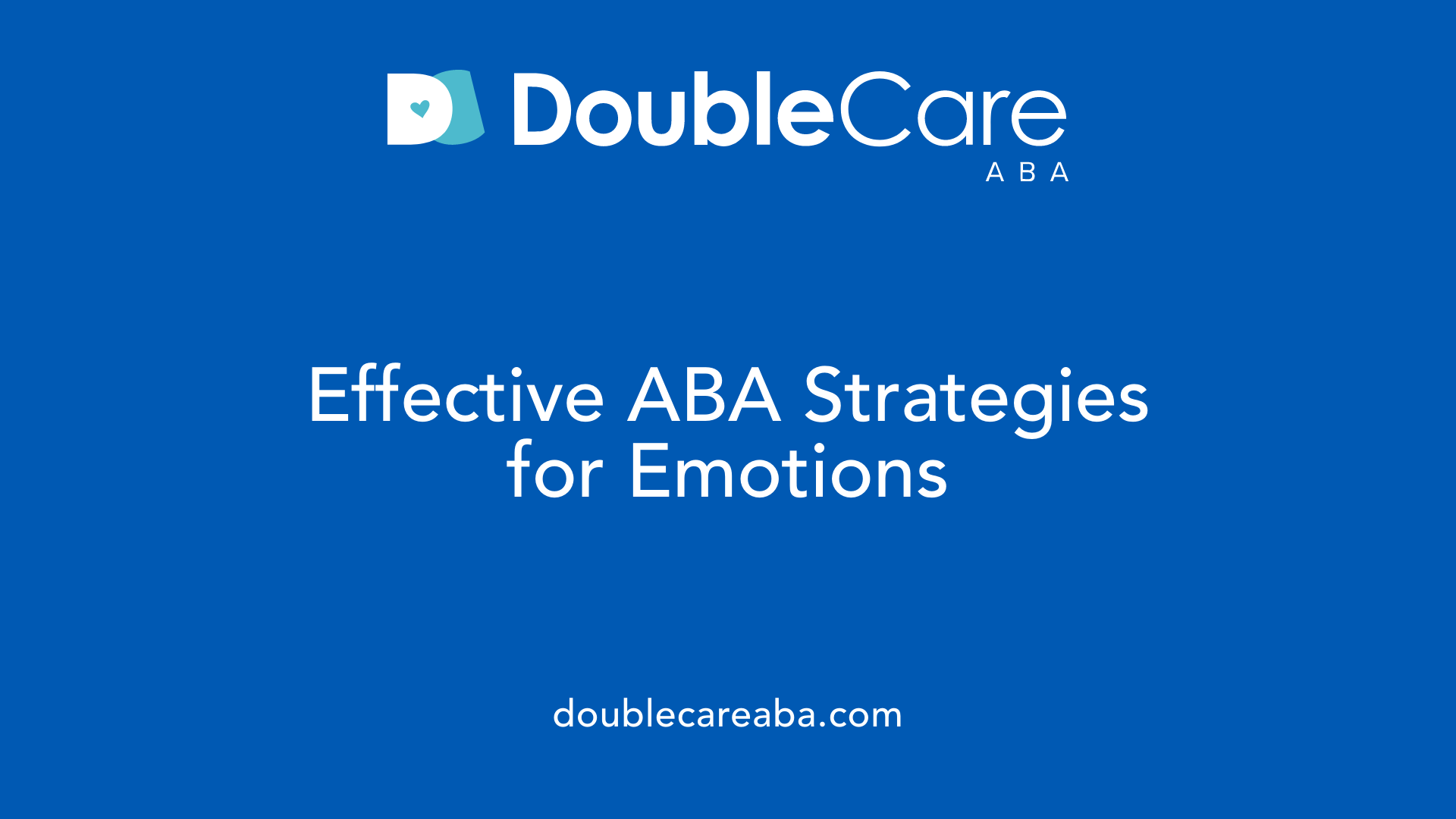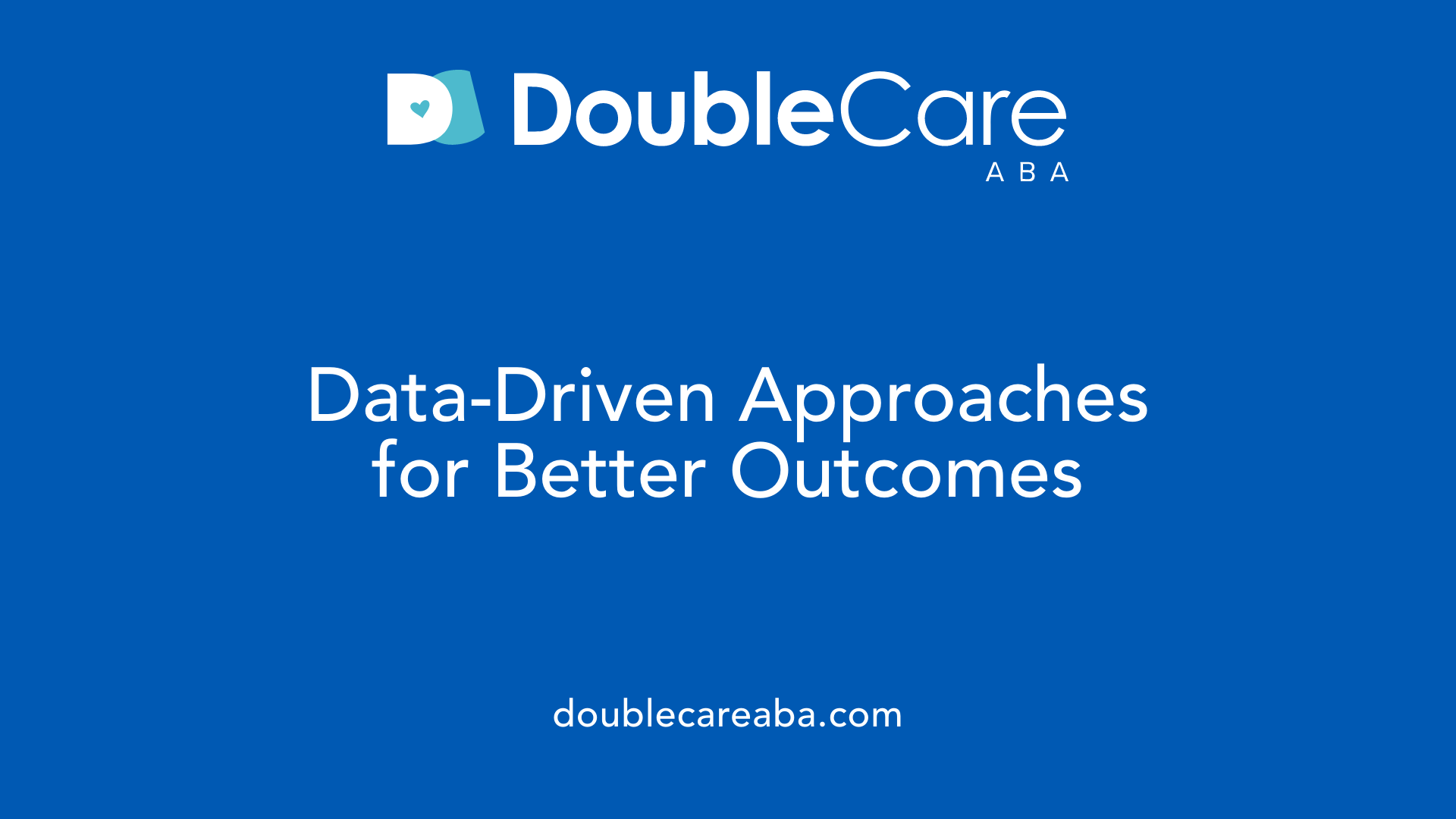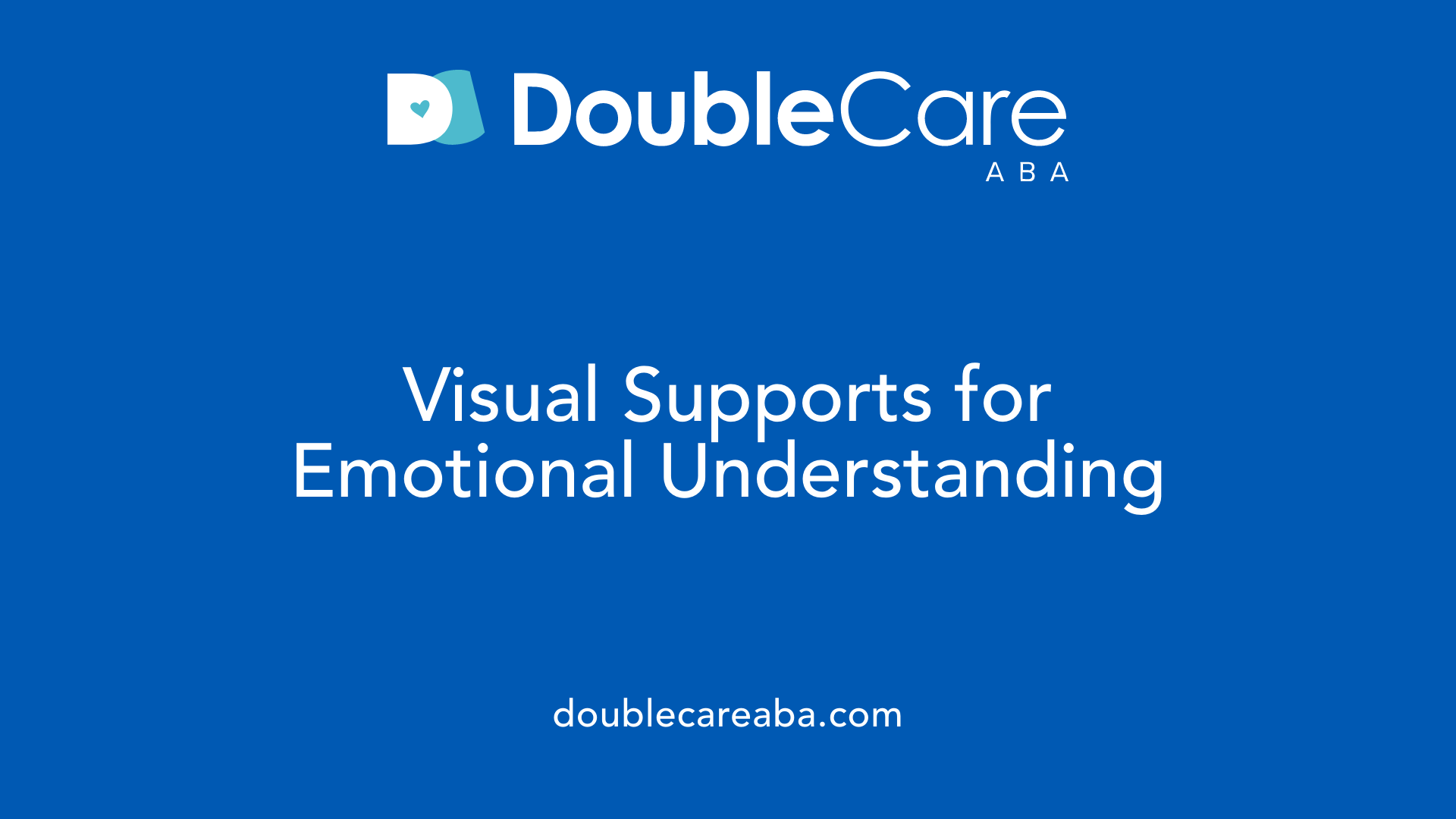How to Support Emotional Regulation in Autism
Enhancing Emotional Resilience in Autism: Strategies and Insights

Understanding Emotional Regulation in Autism
Emotional regulation challenges are common among individuals with autism, impacting their daily interactions and overall well-being. This article explores effective ways to support and teach emotional regulation skills, drawing on the principles of Applied Behavior Analysis (ABA) therapy and evidence-based strategies. By understanding the underlying difficulties autistic individuals face and the therapeutic approaches available, caregivers and professionals can foster resilience and emotional balance in those they support.
The Nature of Emotional Regulation Difficulties in Autism

What emotional regulation challenges do individuals with autism face?
Individuals with autism frequently face significant challenges in managing their emotions. This includes difficulties in handling complex feelings such as disappointment, frustration, and anger. Because of these challenges, they often rely on less adaptive or effective strategies to cope with these emotions.
Internalizing and externalizing behaviors
These emotional regulation difficulties can contribute to both internalizing problems, which involve inwardly directed feelings such as anxiety or depression, and externalizing behaviors, which are outwardly expressed actions like aggression or behavioral outbursts. These behaviors can affect social interactions and overall well-being.
Adaptive and maladaptive strategies
While some individuals with autism develop adaptive strategies that help them manage emotions more effectively, many struggle more frequently with maladaptive coping techniques. Recognizing and supporting the development of adaptive emotional regulation strategies is crucial to enhancing emotional resilience and improving daily functioning.
Defining Emotional Regulation and its Importance

What is emotional regulation and why is it important for individuals with autism?
Emotional regulation is the ability to manage and respond to difficult feelings such as disappointment, frustration, and anger in a constructive way. It also involves the skill to recover from emotional episodes, helping individuals maintain stability in their emotions.
For learners with autism, practicing emotional regulation is particularly important. Many individuals on the autism spectrum experience challenges with emotion regulation, often using less adaptive strategies and exhibiting both internalizing and externalizing problems. Developing this skill can increase resilience, which means they can better handle stress and rebound from upsetting situations more effectively.
Improved emotional regulation supports better social interactions and communication, which are often areas of difficulty for learners with autism. This makes it a valuable skill that contributes to a more positive quality of life, easing everyday challenges that they might face.
Applied Behavior Analysis (ABA) Therapy: An Overview

What is Applied Behavior Analysis (ABA) therapy and how does it help individuals with autism?
ABA therapy is a scientific, evidence-based method that uses the principles of learning and behavior to support individuals with autism. By focusing on observable actions, ABA helps teach important skills such as communication, social interaction, and daily living activities. This therapy relies on strategies like positive reinforcement and structured learning to tailor interventions to each person's unique needs.
How does ABA approach teaching emotion regulation in autism?
Emotion regulation is a vital skill that involves managing feelings like frustration, anger, and disappointment, and bouncing back from emotional challenges. Individuals with autism often struggle with regulating emotions, which can lead to internalizing (e.g., anxiety) or externalizing (e.g., aggression) behaviors. ABA views emotions and regulation strategies as measurable behaviors, making it possible to observe, analyze, and teach these skills systematically.
Behavior analysts gather data on what triggers emotional responses, environmental factors, and how learners manage their feelings. This data-driven approach guides personalized support and encourages the generalization of skills across settings.
What evidence-based strategies does ABA use to improve emotion regulation?
ABA employs seven evidence-based methods to build emotion regulation skills in learners with autism:
- Foundational Skills: Developing communication, understanding reinforcement, impulse control, and self-awareness.
- Use of Visuals: Incorporating pictures and charts to clarify emotions and coping strategies.
- Modeling and Labeling: Demonstrating appropriate emotional responses and naming emotions.
- Discrete Trial Teaching (DTT): Breaking skills into small, teachable steps with repeated practice.
- Behavior Skills Training (BST): Combining instruction, modeling, rehearsal, and feedback.
- Giving Feedback: Offering constructive responses to support learning.
- Promoting Skill Generalization: Ensuring skills apply across different environments and situations.
Together, these approaches enable learners to recognize, express, and manage emotions effectively, contributing to improved adaptive behaviors and overall well-being.
Who Provides ABA Therapy and Their Qualifications

Who typically provides ABA therapy and what qualifications do they have?
ABA therapy is delivered by a team of specialists who are trained in behavioral analysis and autism-specific interventions. The primary providers include Board Certified Behavior Analysts (BCBAs), Registered Behavior Technicians (RBTs), and Behavior Technicians.
Qualifications of ABA providers
- Board Certified Behavior Analysts (BCBAs): BCBAs have completed graduate-level coursework in behavior analysis and passed a certification exam. They design and supervise behavior intervention plans and ensure therapy aligns with evidence-based practices.
- Registered Behavior Technicians (RBTs): RBTs provide direct therapy under BCBA supervision. They complete specific training and certification focused on implementing behavior plans.
- Behavior Technicians: Often similar to RBTs, they assist in therapy sessions and undergo in-service training.
Training and ethical standards
All providers follow strict ethical guidelines established by the Behavior Analyst Certification Board (BACB). Continuous education and supervision are essential to maintain certification and provide effective, respectful care. This structured training ensures ABA therapy is delivered safely and supports learners' unique needs, including strategies for managing emotional challenges often experienced by individuals with autism.
ABA Techniques Supporting Emotional Regulation

What are some common techniques used in ABA therapy for autism?
Applied Behavior Analysis (ABA) employs a variety of methods to support learners with autism, particularly in enhancing emotional regulation. These techniques focus on observable behaviors, making private emotional experiences measurable and manageable.
One central technique is discrete trial training (DTT), which involves breaking down skills into small, manageable components, allowing repetitive practice and reinforcement. This helps learners gradually acquire emotion regulation skills in a structured way.
Positive reinforcement is heavily used to encourage desirable behaviors, such as adaptive emotional responses or the use of effective regulation strategies. By rewarding these behaviors, the likelihood of them occurring again increases.
Visual aids are powerful in ABA; visual modeling involves showing learners images or videos depicting appropriate emotional reactions and coping strategies. This supports understanding and retention of concepts that might otherwise be abstract.
To effectively teach new skills, prompting and fading are critical. Prompting involves providing cues or assistance initially, which is gradually removed (faded) as the learner gains independence. This ensures learners become confident in applying emotion regulation without ongoing support.
Combined, these ABA techniques provide a solid foundation for teaching emotional regulation to individuals with autism, promoting better management of feelings such as frustration or disappointment through observable and teachable behaviors.
Evidence for ABA’s Effectiveness in Autism

What benefits have studies shown about the effectiveness of ABA therapy for individuals with autism?
Applied Behavior Analysis (ABA) therapy is widely recognized for its positive impact on individuals with autism. Research indicates that ABA significantly improves communication abilities, social interactions, and essential daily living skills. These skill improvements help individuals gain greater independence and enhance their quality of life.
Beyond skill development, ABA effectively reduces challenging behaviors such as aggression, tantrums, and self-injurious actions. By applying consistent, evidence-based strategies, ABA helps learners develop healthier ways to express needs and emotions.
Early and intensive intervention with ABA is especially crucial. Starting therapy at a young age takes advantage of developmental windows when the brain is most adaptable, often leading to more pronounced and lasting outcomes. Intensive programs that include many hours per week of focused ABA therapy have been linked to meaningful improvements in cognition, language, and adaptive functioning.
Furthermore, ABA supports emotional regulation, enabling learners to better manage feelings like frustration and anger. This emotional resilience promotes well-being and facilitates social engagement. Overall, ABA provides a structured, measurable framework to foster growth and autonomy in individuals with autism, laying the foundation for fulfilling, self-directed lives.
Ethical Considerations and Limitations of ABA Therapy

Are there any criticisms or limitations of ABA therapy that families should be aware of?
Applied Behavior Analysis (ABA) therapy has been a cornerstone in autism intervention, but it is not without its critiques. Historically, ABA was intensive and sometimes overly focused on compliance, potentially neglecting the individual emotional and sensory needs of learners with autism. Some earlier methods involved punitive strategies, which are now widely rejected and replaced by more respectful, supportive approaches.
Modern ethical practices emphasize personalized treatment plans that recognize each individual's unique experiences and strengths. Family involvement is encouraged to ensure that goals align with the learner's emotional health and personal preferences. Behavior analysts strive to incorporate compassionate techniques, promoting skills like emotional regulation and self-awareness.
Despite these advancements, challenges remain regarding accessibility to quality ABA services. Some families face difficulties finding trained professionals or affordable programs, which can limit the therapy's benefits. Awareness and advocacy for inclusive, respectful approaches continue to grow, guiding families toward therapies that honor individuality, promote emotional well-being, and adapt flexibly to learner needs.
Applying Behavioral Theory to Emotion Regulation

How does Skinner's behavioral theory relate to teaching emotion regulation?
Skinner's behavioral theory emphasizes that behaviors, including private events like emotions, can be defined, observed, and measured. For learners with autism, this approach allows complex internal experiences such as feelings of frustration or anger to be addressed in practical, evidence-based ways by focusing on the external behaviors that reflect these emotions.
How are private events like emotions and regulation strategies defined as observable behavior?
Private events, traditionally viewed as internal and unmeasurable, are operationalized as observable behaviors in behavioral analysis. For example, an emotion like anger might be reflected through body language, facial expressions, or vocal tone. Likewise, emotion regulation strategies, such as deep breathing or seeking a break, are behaviors that can be tracked and taught explicitly.
Why is measuring emotion regulation important?
Collecting data on emotional triggers, setting events, and the specific regulation behaviors enables behavior analysts to tailor interventions effectively. Measuring these behaviors allows practitioners to monitor progress, adjust teaching methods, and ensure the skills generalize across settings. This data-driven approach supports the development of resilient emotion regulation abilities in individuals with autism, promoting their overall well-being and adaptability.
Collecting Data to Enhance Intervention

Why is collecting data on triggers and setting events important?
Collecting data on triggers and setting events is crucial in understanding what leads to emotional challenges in individuals with autism. Triggers could be specific situations, interactions, or environmental factors that precede emotional dysregulation. Setting events are broader conditions that influence how someone responds, such as fatigue or hunger. By tracking these elements, behavior analysts can identify patterns that contribute to difficult emotional episodes.
How is tracking regulation behaviors conducted?
Tracking regulation behaviors involves observing and recording how an individual attempts to manage their emotions. This includes noting the use of specific strategies the person employs during stressful situations. By defining these emotional and regulatory behaviors as observable and measurable actions, consistent with behavioral theory, data collection becomes objective and evidence-based.
How does data inform ABA practice?
Data collected on triggers and regulation behaviors directly informs ABA interventions by pinpointing which antecedents to modify and which strategies to reinforce in teaching emotion regulation. This evidence-driven approach allows behavior analysts to tailor their methods, ensuring that interventions effectively address the individual's unique challenges and needs.
How does data promote skill generalization?
By monitoring when and where emotional regulation strategies are used, analysts can promote generalization—helping the individual apply learned skills across different settings and situations. Continuous data collection allows for adjustments in intervention to support broader use of emotion regulation techniques, making skills more practical and durable.
This structured data collection approach ensures that teaching emotion regulation is responsive, measurable, and outcomes-focused, ultimately enhancing the quality of life for individuals with autism.
Seven Evidence-Based Strategies to Teach Emotional Regulation

Foundational Skills
Teaching emotion regulation begins with foundational skills such as communication, understanding reinforcement, impulse control, and self-awareness. These skills provide the basis for learners with autism to identify and express their emotions effectively.
Use of Visuals
Visual supports help make abstract feelings concrete. By using pictures, charts, or diagrams, learners can better recognize emotions and appropriate regulation techniques.
Modeling and Labeling
Behavior analysts and educators model emotional regulation strategies while labeling emotions and behaviors aloud. This process helps learners associate words with feelings and responses.
Discrete Trial Teaching
Discrete Trial Teaching (DTT) breaks down emotion regulation skills into small, teachable components with clear instructions, prompting, and reinforcement, ensuring systematic learning.
Behavior Skills Training (BST)
BST combines instructions, modeling, rehearsal, and feedback to build emotion regulation skills. It allows repeated practice in a structured way to strengthen skill acquisition.
Giving Feedback
Providing immediate and specific feedback helps learners understand what regulation behaviors were effective and encourages improvement.
Promoting Skill Generalization
Teaching emotion regulation also focuses on transferring skills across different settings and situations. Data collection on triggers and regulation behaviors informs individualized strategies to ensure skills generalize beyond controlled environments.
Together, these strategies create a comprehensive framework for teaching learners with autism how to manage difficult emotions and develop resilience through observable and measurable behaviors aligned with behavioral theory.
Developing Foundational Skills for Regulation

Why are foundational skills important for emotion regulation in autism?
Foundational skills lay the groundwork for learners with autism to effectively manage their emotions. These skills help individuals understand and express their feelings, control impulses, and become aware of their emotional states. Without these essential competencies, teaching emotion regulation can be less effective.
What foundational skills support emotion regulation?
Several foundational skills are critical in building emotional regulation abilities:
- Communication: Being able to express thoughts and emotions clearly allows individuals to signal their needs and receive appropriate support.
- Understanding Reinforcement: Knowing how certain behaviors lead to outcomes helps learners regulate emotions by anticipating consequences and making informed choices.
- Impulse Control: The ability to pause and think before acting helps reduce immediate reactions like anger or frustration.
- Self-Awareness: Recognizing and labeling one’s emotional state is crucial for identifying when regulation strategies are needed.
How are these skills taught?
Behavior analysts adopt evidence-based methods, viewing emotions and regulation strategies as observable behaviors that can be measured and shaped. Teaching these foundational skills often involves the use of modeling, feedback, and repeated practice through structured activities. For example, learners may be taught to identify emotions using visuals or role-playing.
Impact on emotion regulation development
By focusing on foundational skills, educators create a strong platform for learners with autism to develop adaptive emotion regulation strategies. This preparation enhances their ability to manage difficult feelings like frustration or disappointment and supports more positive social interactions.
Supporting Emotional Regulation with Visual Tools

How are visual schedules used to support emotion regulation?
Visual schedules provide structure and predictability for individuals with autism by outlining daily activities and transitions visually. This helps reduce anxiety and frustration by preparing learners for what to expect. When learners understand the sequence of events, they can better manage their emotions around changes and unforeseen situations.
What role do emotion cards play in teaching emotional regulation?
Emotion cards visually represent different feelings, helping learners identify and label their own emotions. This practice enhances self-awareness, a foundational skill in emotion regulation, by making internal experiences observable. Using these cards, learners can also practice selecting appropriate strategies to cope with specific emotions, fostering adaptive regulation behaviors.
Why are visual tools especially beneficial for visual learners with autism?
Many individuals with autism process visual information more effectively than verbal instructions. Visual supports harness this strength by making abstract concepts like emotions and regulation strategies concrete and accessible. They support independence by enabling learners to self-monitor and apply skills without constant adult prompting.
In summary, visual tools like schedules and emotion cards are integral to teaching emotion regulation. They provide clarity, promote understanding, and empower learners to manage their feelings in real time. Integrating these supports aligns with evidence-based practices that emphasize observable and measurable behaviors as the foundation for effective skill development.
Modeling and Labeling Emotions as a Teaching Method

Demonstrating Appropriate Regulation
One effective way behavior analysts teach emotion regulation to individuals with autism is through modeling. This approach involves the therapist or educator demonstrating how to manage emotions like frustration or anger using adaptive strategies. By observing these demonstrations, learners can watch and imitate how to respond constructively to challenging feelings.
Labeling Feelings
Alongside modeling, labeling emotions clearly and consistently helps individuals with autism better understand their own feelings. When educators name emotions—such as saying, "I feel upset because..."—learners start to recognize and identify similar feelings within themselves. This practice builds an essential bridge between private emotional experiences and observable behaviors.
Enhancing Self-Awareness
Modeling and labeling work together to enhance a learner's self-awareness, a foundational skill for effective emotion regulation. By becoming more aware of emotional states and appropriate responses, individuals with autism can develop greater control over their reactions. This self-awareness supports more adaptive regulation strategies and reduces internalizing or externalizing problems.
Using modeling and labeling within a broader behavior analytic framework, educators incrementally build these skills in a measurable and observable way. This evidence-based method aligns with Skinner's behavioral theory by turning private events, like emotions, into teachable behaviors that promote resilience and emotional health.
Using Discrete Trial Teaching for Skill Acquisition

What is Discrete Trial Teaching and How Does It Support Emotion Regulation?
Discrete Trial Teaching (DTT) is a structured method of teaching that breaks down complex skills into small, manageable parts. This approach is particularly effective for learners with autism as it provides clear and consistent practice opportunities.
How is Structured Practice Implemented in DTT?
In DTT, each trial has a clearly defined beginning and end, allowing for repeated and focused practice of specific emotion regulation components. This helps learners master each step before moving on to more complex skills.
Why is Breaking Down Skills Important?
Emotion regulation involves multiple processes such as recognizing emotions, applying coping strategies, and recovering from emotional episodes. DTT breaks these into discrete tasks. For example, a learner may first practice labeling feelings, then practice choosing a calming technique. This incremental approach enhances understanding and retention.
How Does Reinforcement Promote Learning in DTT?
During DTT, reinforcement is used to encourage desired behaviors. Immediate positive feedback or rewards following correct responses motivate learners to use adaptive emotion regulation strategies consistently. This aligns with behavior analysts' focus on observable and measurable behaviors.
Together, these principles make DTT a powerful strategy to build foundational emotion regulation skills in a systematic, measurable, and supportive way for individuals with autism.
Behavior Skills Training and Its Role in Regulation

What Is Behavior Skills Training (BST) in Emotion Regulation?
Behavior Skills Training (BST) is an evidence-based teaching method that plays a crucial role in helping individuals with autism develop emotion regulation skills. It involves a systematic approach consisting of four core components: instruction, modeling, rehearsal, and feedback.
How Does Instruction Support Emotion Regulation?
Instruction provides clear, concise explanations of emotional concepts and regulation strategies. It helps learners understand what specific emotions feel like and how to respond to them appropriately. For individuals with autism, this foundational knowledge is vital given the challenges they face in managing emotions.
What Is the Role of Modeling in BST?
Modeling demonstrates appropriate emotion regulation behaviors. A teacher or therapist exhibits the desired emotional responses and strategies in situations that may trigger difficult feelings like frustration or anger. This visual demonstration supports comprehension, especially when combined with visual aids.
How Does Rehearsal Enhance Skill Acquisition?
Rehearsal involves practicing emotion regulation strategies in controlled settings. Through repeated practice, individuals get the chance to internalize techniques such as deep breathing, using self-talk, or seeking help. Rehearsal builds confidence and reduces anxiety when facing real emotional challenges.
Why Is Feedback Important?
Feedback provides immediate, specific information about learners' performance during practice. Positive reinforcement encourages the use of effective strategies, while corrective feedback guides adjustments. This continuous loop of practice and feedback is essential for mastering emotion regulation skills.
Together, instruction, modeling, rehearsal, and feedback offer a structured framework that supports meaningful learning and generalization of emotional regulation in daily life for autistic learners.
Feedback: Promoting Growth Through Responsive Interaction

How does feedback help in teaching emotion regulation to individuals with autism?
Feedback, both positive and corrective, plays a crucial role in teaching emotion regulation skills to individuals with autism. Providing positive feedback reinforces adaptive emotional responses and encourages learners to continue practicing these strategies. Corrective feedback, when delivered thoughtfully, guides learners toward more effective regulation behaviors without discouraging them.
Why is encouraging persistence important?
Emotion regulation can be challenging to master, especially for those with difficulties in managing feelings like frustration and anger. Encouragement through responsive feedback helps learners persist through setbacks, fostering resilience and a sense of accomplishment. This persistence is vital as it supports gradual improvement and builds confidence in using new skills.
How do behavior analysts adjust strategies based on feedback?
Data collection on emotional triggers and regulation behaviors allows behavior analysts to tailor feedback to individual needs. By observing how learners respond, analysts can modify teaching approaches—such as increasing the use of visuals, adjusting modeling techniques, or incorporating more discrete trial teaching—to better support skill acquisition and generalization. This responsive interaction ensures that feedback remains effective and meaningful.
In summary, feedback is an interactive process that promotes growth in emotion regulation by reinforcing successes, guiding corrections, encouraging persistence, and informing strategy adjustments tailored to each learner's progress.
Promoting Generalization of Emotional Regulation Skills

How can skills be applied across different settings?
To ensure individuals with autism can use emotional regulation strategies beyond structured learning environments, teaching must extend across varied contexts. This includes home, school, and community settings where emotional triggers differ. Behavior analysts encourage data collection on specific triggers and settings, tailoring interventions to help learners recognize and manage emotions wherever they occur.
What approaches help maintain gains in emotion regulation?
Consistent reinforcement and ongoing feedback are crucial for maintaining progress. Strategies like Behavior Skills Training (BST) emphasize repeated practice combined with constructive feedback, promoting retention of skills. Furthermore, incorporating visuals and modeling within natural routines helps solidify these behaviors over time.
Why is involving caregivers and educators important?
Caregivers and educators play a vital role in supporting generalization. Their involvement ensures consistent reinforcement of emotion regulation strategies outside clinical settings. Training these key individuals on foundational skills, behavioral cues, and prompting methods fosters a cohesive support system, allowing learners with autism to experience emotional regulation as a natural, everyday skill.
Toward Greater Emotional Resilience in Autism
Emotional regulation is a vital skill that can significantly improve quality of life for individuals with autism. ABA therapy offers a structured, evidence-based framework for teaching these skills by combining behavioral theory, data-informed practice, and proven teaching strategies. While recognizing its limitations, appropriately tailored ABA interventions delivered by qualified professionals can nurture emotional resilience, independence, and social participation. Collaborations with families and educators further enhance generalization and meaningful application. With continued focus on respectful, individualized approaches, supporting emotional regulation in autism paves the way for fuller engagement and well-being.
References
- Simple evidence-based strategies for teaching emotion ...
- The Controversy Around ABA
- Barriers to Receiving Applied Behavior Analysis Services in ...
- ABA Techniques: Strategies for Behavior Analysts - GSEP Blog
- ABA Therapy Examples, Definition & Techniques
- Applied Behavior Analysis (ABA)
- Who Qualifies for ABA Therapy: Eligibility Guide
- Behavioral Health Treatment | Children with Autism Spectrum ...
- Applied Behavior Analysis (ABA)
- Board Certified Behavior Analysts (BCBA)
















